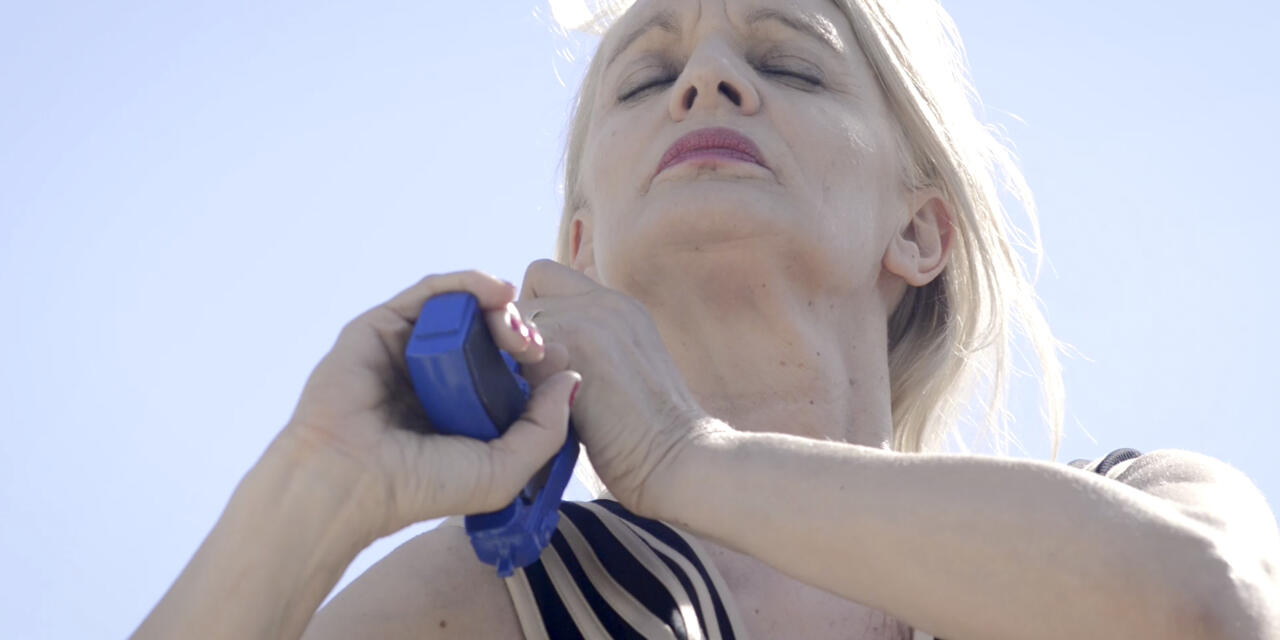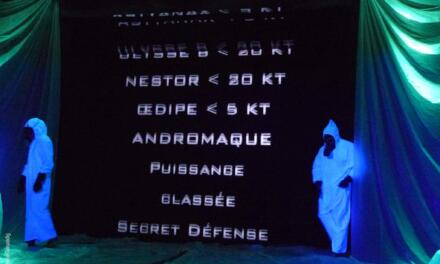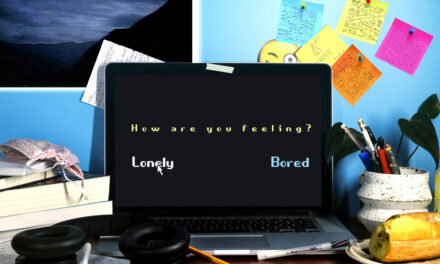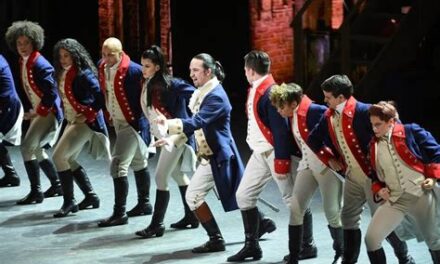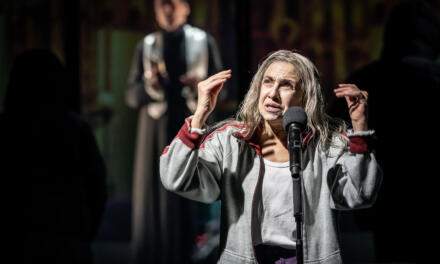It was a chance meeting at MoMA’s dance series “Some sweet day” that brought Ingrid Nachstern and Cate McNider together. The artistic collaborators first struck creative sparks off each other in a performance choreographed by Steve Paxton in 2012—a venture that not only explored the grace of bodily movement but also challenged ideas about medium.
As founding Artistic Director of Night Star Dance Company, Irish filmmaker Ingrid Nachstern stands acknowledged as one of the great storytellers of our time. A legend of dance, she is the great-granddaughter of Countess Tyraska. Her films—a natural extension of classical ballet—embody contemporary ideas.
Building upon the experience of multi-media dance performance, American artist Cate McNider decided to make painting and poetry her life work. While the human figure remains the most enduring artistic element, the recognition of chance as an artistic resource lends a hand to the creative process itself. It was a seemingly random encounter at Think Coffee on the Bowery in New York City in late July 2022 that led to a conversation with McNider and Nachstern about the collection of paintings on view.
McNider reflects on that moment of meaningful coincidence.
“…when [Ingrid] saw my solo Art show at Think Coffee and she had a trip planned to see her daughter, we met up there and that’s where we met you, when you got up and walked around and looked at the art! Since it’s a coffee shop and not a gallery, I noted it to Ingrid, that someone was actually engaging with the paintings on the wall. And so, I opened a conversation with this rare person, you, to both of our delights. Think Coffee is a bit of a vortex for artists of all kinds, being perched between the East Village, NoHo and SoHo, and on Bowery opposite the former club in the 1980s, CBGBs.” said McNider.
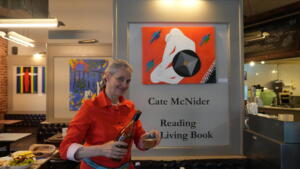
Painter and poet, Cate McNider at Think Coffee on the Bowery in New York City. Photo credit: Alystyre Julian
Connected to the most ethereal movements, Ingrid Nachstern’s films embrace a visual language, which has roots in classical ballet.
“Talking about chance I accidentally fell into filmmaking in 2014. Up to then I had created pure dance pieces. My stage manager Mags Corscadden in 2013, after I had put on a triple bill of dance said ‘These should be made into films!’ And that’s what happened. Two of my works were subsequently turned into Experimental/Screendance films ‘Table Manners/Stopping at Red Lights’ (2014) and ‘Freedom-to go!’ (2015). My solo ‘Who Am I?’ remained a live dance work. My third film ‘Shoe Horn/Office’ (2017) was a film from the outset. Am now trying to finish my fourth film. Four scenes were shot in London in April. Remaining 16 scenes will be shot in Dublin [in 2023],” said Nachstern.
Building upon the theatre arts, her performances break free from traditional narrative.
“So live theatre was my creative home up till 2013. During this time I discovered, again by chance, that I loved performing! I had never realised this before. I had taken a workshop with Deirdre Grant in Wexford and also with Philip van Huffel in Dublin. It looks now in retrospect as if I was doing everything in reverse! I then got a chance to perform a ten-minute solo of mine ‘Who Am I?’ at DTW (Movement Research) in New York in 2011. The piece dealt with marriage, motherhood, and identity. I was lucky at this stage to have met Laurie Uprichard who encouraged me to go to New York. Laurie took my work ‘Watch…Es’ in 2009 for the Dublin Dance Festival. In it I explore the pressures that 21st-century men are under,” said Nachstern.
Nachstern directed “Table Manners/Stopping at Red Lights,” which won the Best Experimental Film prize at the Los Angeles Movie Awards in 2019. Honorably referencing Degas’ ‘Little Dancer’ sculpture, the collaboration with cinematographer Luca Truffarelli captures strength in simplicity.
“The one connection between visual art and dance/film for me is in my film ‘Table Manners/Stopping at Red Lights.’ I went to a Degas exhibition at the Royal Academy in London. I saw his Dancer girl with her hands behind her back. I have Michael Cooney, my dancer, replicating this stance whilst standing on a table. I am sure there are less obvious connections which have filtered into my films. The connection between movement explorations and film for me is that the former have to be pared down in the latter. In a live dance work, the viewer can look anywhere on stage—downstage, upstage et cetera. In film, I need to be very specific and present the viewer with one image. I have to choose carefully and pare down what I offer the viewer in order to have an impact on him/her. Otherwise, my message of the moment will be lost,” as Nachstern explains.
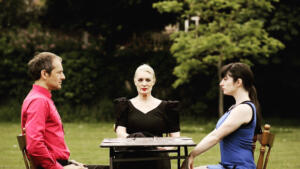
Night Star Dance Company’s Ingrid Nachstern in Table Manners/Stopping at Red Lights. Photo credit: Luca Truffarelli
In regard to exploring expressive possibilities, Nachstern contemplates the uncanny phenomenon of fortuity.
“Talking about chance I went to a workshop given by the Portuguese Choreographer Claudia Diaz. She gave us sentences which we were then to choreograph. I got ‘pollution is bad for the environment’ which I found pretty difficult to choreograph I have to confess! She mentioned, by the way, that there was a microphone in the room which we could use. I distinctly remember thinking that I was going to avoid it. However, in the end, I ended up talking for several minutes into the microphone and had to be told that my turn was over! This experience led me to start working with text in my work ‘Table Manners/Stopping at Red Lights’ in 2013,” said Nachstern.
To better understand the way these choices direct meaning, Ms. Nachstern a teacher of classical ballet at the Royal Academy of Dance in London reflects on her career as a choreographer, director, and screenwriter.
“I started out as a choreographer for live dance in approximately 2001. I used to teach ballet for adults and was looking for a piece of music for my class. I came across a piece of Gounod’s Faust and was entranced by it. I fell into what I can only describe as a trance and choreographed my first ever work ‘Swirling Leaves.’ This was not planned at all. In the end I asked a few students to perform it for me. The piece—a few minutes long—was purely in response to the music and I used ballet terminology to do it,” said Nachstern.
Nachstern continued, adding,
“So if we talking about chance, my hearing this piece of music started off my career in choreography. My second piece ‘The Pilot’s Wife’ was deliberately made to a piece of music by Kim Wilde. My third work ‘Bow-tie like ‘Chioni’ was an attempt to deal with my grief, after the death of my father. I only realised this after a performance—which was held privately in a theatre—when an audience member pointed out the family situation to me.”
Highlighting the relationship of art to the society in which it is produced, Nachstern who is based in London and Dublin comments on the significance of her independent film “Shoe Horn/Office.”
“In my film ‘Shoe Horn/Office’ I deal with the topic of sexism in the office and in general. I also deal with the restrictive nature of women’s clothing throughout the ages (foot binding, corsets, sky-high high heels). Brock Turner, a student from Stanford, gave me the idea for the film. He had allegedly raped a comatose girl on campus. He got time in prison for this. His father bemoaned the fact that Brock wouldn’t be able to eat some steak and felt the sentence was harsh ‘for a little bit of action’. I use this phrase in a rap context in the film,” said Nachstern.
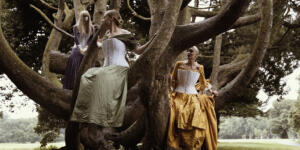
Shoe Horn/Office, is a film directed by Ingrid Nachstern. Photo credit: Luca Truffarelli
Nachstern continued, adding,
“From 2014 to now my focus is on filmmaking. I use a script (generally rhyming couplets) and a little bit of dance in my films. My current project is to do with cosmetic surgery and the relentless pressure that young girls are under to have the so-called perfect body. I filmed three scenes from this, my fourth film, in London last April. I am intending to shoot the remaining 16 scenes in Dublin [in 2023] when I have enough funds to do so. Films cost a lot of money! But I am used to working on a shoestring budget and I prepare very well beforehand to save time on set.”
The process by which her film “Freedom-to go!” was conceived is noteworthy, simultaneously meshing elements from signs that come to her through serendipity.
“I consider some of my scripts in my films to be poetic in the sense that they are generally in rhyming couplets. The aim here again is to drive home my message. When composing the script for ‘Freedom-to go!’ I sat at my kitchen table intermittently over a six week period and felt the script being transmitted without virtually no effort on my part. This has never happened before or since. It was most extraordinary!” expounded Nachstern.
Nachstern continued, adding,
“My aim as an artist is to transmit my message to the audience. My topics have included immigration/emigration, celebrity culture, the Iraq war, pornography, child beauty pageants, public/private space, abuse of resources, sexism to name a few! When I have nothing left to say I shall stop!”
Creating a bridge between the realm of form and the realm of spirit, Cate McNider’s conceptual ideas are influenced by drama and the literary arts.
“I began my artistry as a mover/dancer, then came acting at a local community theatre before graduating college BA in theatre. I decided to become an actress after reading Portia’s mercy speech at 16. Being a Leo, and a sun-driven curious spirit, performance and art-making came naturally. Expressing the IN-visible has always been the domain of the arts. Movement and painting being primal, before we acquire a spoken/written language, I needed to get back to the pre-verbal in my healing to open myself and yet many of the poems wrote themselves through this process. Movement and acting was a readily available means in society with which to begin my internal investigations. Then when I became a body-mind and somatic movement practitioner in 1991 and adding many movement and healing modalities through 2018, i.e.; studying Contact Improvisation, my movement vocabulary expanded, and later I added a cinematic backdrop or past life narrative, layering the expression, as in ‘Out of the Dark’ in 2006 and ‘RISK, It’s Really All One Dance,’ 2005. Becoming an Alexander Technique teacher in 2016, brought me full circle, bringing movement awareness to actors, musicians, artists, and other students. I first encountered the method in London at The Drama Studio as a part of their classical training.”
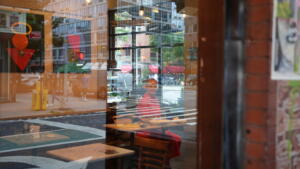
New York City-based artist Cate McNider at Think Coffee on the Bowery. Photo credit: Alystyre Julian
Emphasizing “themes of consciousness growth, brought about by body-mind awareness and explorations in meditation,” Ms. McNider’s paintings explore traditional approaches to the human figure in art. Her playful compositions extend to her second collection of poetry, which is forthcoming from Atmosphere Press in 2023.
“When I was (at) Sweet Briar College, I ran across the Martha Graham letter to Agnes de Mille, since I was studying her technique, and that gave me permission or a directive, to trust the impulses to create what I felt. It supported the ‘keep the channel open’ question that I was holding. Looking to the body as a source of truths within, and the body as a subject pervaded my early work in solo dance Multi-media pieces, my poetry in ‘Separation and Return,’ my first collection and in my painting since 1994. I was searching to reopen access to myself because in acting, I found the door not as open as I wanted. I was looking to those characters to help me access myself, but despite a good review (‘ A charming and well spoken Millie”), a small Role in Shaw’s Doctor’s Dilemma at The Roundabout theater in 1990 playing the Doctor’s maid Millie, auditions didn’t provide anything more interesting, so I told my agent I was done. That’s when the poetry became the new shovel, digging for answers within myself. Then, painting in 1994, and then a return to solo theatrical-movement explorations in the 1990s and 2000s, in downtown venues like Dixon Place, PS122, and Brooklyn’s Performing Arts Alliance and then decades later at MoMA where I met Ingrid Nachstern at the re-make of Steve Paxton’s pieces,” said McNider.
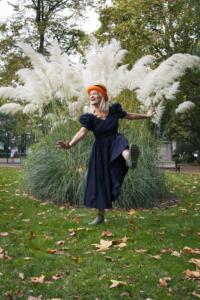
Ingrid Nachstern. Photo courtesy: Night Star Dance Company.
She continued, adding,
“Ingrid and I met at MoMA on the day of rehearsal, in the waiting area, if I remember correctly and we just started talking. Ingrid being Irish, and me having Irish ancestry, and having traveled in Ireland, and studied theater and dance in London after college, we had a lot to talk about. We just hit it off. And then after the performances, we decided to keep in touch. Artistic alliances are so important, to inspire and support one another, because who else understands the rigor of creation but those who pursue an examined life in the light of creativity, but fellow artists?! Ingrid’s dance films may inspire me to assemble a lot of footage I have over the years into some cohesive narrative someday; her work is brilliant, and the awards keep coming to prove it!”
Utilizing the element of chance to guide an artistic vision, Ingrid Nachstern @countesstyraska and Cate McNider @catemcnider capture the imagination of the human spirit with equal fervor.
This post was written by the author in their personal capacity.The opinions expressed in this article are the author’s own and do not reflect the view of The Theatre Times, their staff or collaborators.
This post was written by Alexander Fatouros.
The views expressed here belong to the author and do not necessarily reflect our views and opinions.

